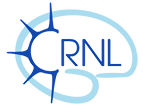Our goal is to unravel the mechanisms of wakefulness and associated sleep/wake pathologies, combining both basic and translational research.
Wakefulness - as well as sleep – is a highly integrative function that relies on dedicated neuronal networks and is modulated by ongoing behavioral, neurodevelopmental, environmental, as well as cellular, molecular and metabolic signals.
We thus investigate the brain arousal systems and regulatory networks in various behavioral contexts during waking, its impact on the local regulation of cortical activity and on molecular/genetic signaling.
Our human and clinical research investigates how sleep, wakefulness and non-visual functions are regulated by light and the circadian clock. It also addresses the impact of sleep and sleep disorders on human health in adults and children.
We also investigate physiopathology and therapy of sleep/wake disorders, notably narcolepsy and excessive daytime sleepiness.

In mice : sleep/wake EEG analysis, pharmacological and behavioral tests, toxoplasma-infection model, optogenetics, DREADD, immuno-histology.
In Drosophila : molecular genetics, sleep/wake monitoring, metabolic and behavioral tests, immuno-histology.
In humans : polysomnography, sleep/wake EEG analysis across lifespan and in healthy individuals and patients, circadian rhythms (constant routine), chronotyping, circadian phase assessment (Dim Light Melatonin Onset), non-visual responses to light, hormonal profiling (melatonin, cortisol, etc.), clock genes, melanopsinergic responses, behavioral/cognitive and physiological tests, mathematical modeling, statistical analysis of complex databases, pupillary reflex, visual performance, body temperature, visual discomfort, pain, mood, CSF analysis, clinical trials in children and adults.
Our current investigations address:
- the differential involvement of the histaminergic and orexinergic systems in various behavioral contexts during waking and sensory perception via thalamocortical dynamics;
- the role of amino-acid transport and neuroglial signaling in the modulation of networks associated with wakefulness and behavioral performance;
- the role of light- and circadian clock-driven mechanisms in wake regulation;
- the impact of waking systems (orexin, histamine) deficiency in the physiopathology of sudden infant death syndrome and in childhood narcolepsy, novel diagnostic and therapeutic concepts on sleep disorders.
The WAKING research projects include the use and development of state-of-the-art technologies in animal models (mouse, Drosophila) and in humans from infancy to adulhood. The projects have received funding including ANR, CPER, Idex Breakthough and industrial grants.
In addition, the WAKING team has been selected for the renewed LABEX CORTEX starting in 2020 and our associated clinical group is recognized as national reference center for narcolepsy.
Laurent SEUGNET - laurent.seugnet@inserm.fr
Jian-Sheng LIN - js.lin@inserm.fr











